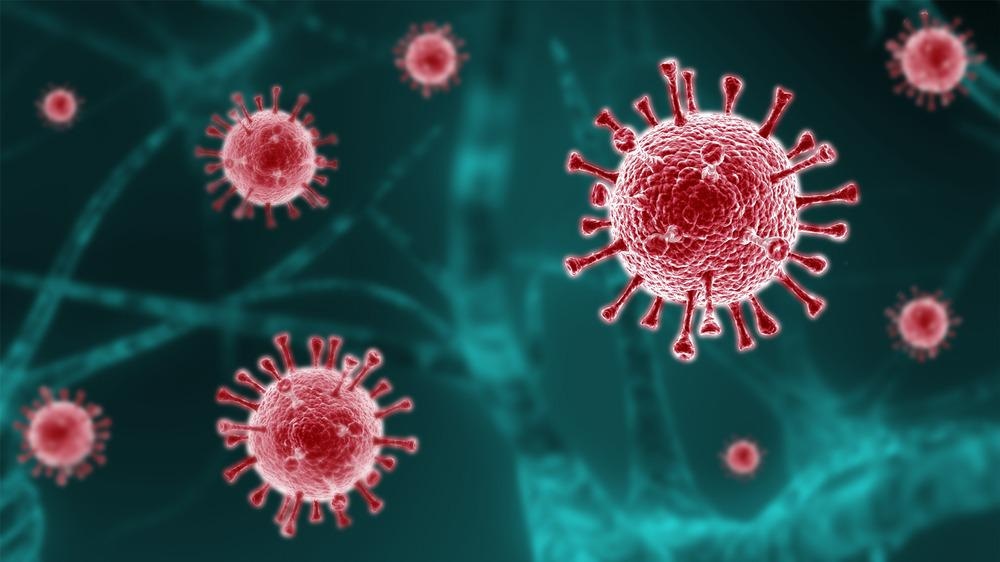The ongoing coronavirus disease 2019 (COVID-19) pandemic highlighted the need to develop effective diagnostic tools to rapidly identify the presence of novel viruses and ultimately reduce their transmission. In particular, nanomaterial-based sensors have been widely studied for several decades and present a unique opportunity to resolve this issue.

Image Credit: Red-Diamond/Shutterstock.com
Over the past two decades, several novel coronaviruses have emerged throughout the world, causing a spike in reported cases and associated deaths in several nations. These viruses include the severe acute respiratory syndrome coronavirus (SARS-CoV) and Middle East respiratory syndrome coronavirus (MERS-CoV).
As compared to these previous epidemics, the emergence of the structurally similar SARS-CoV-2, which is the virus responsible for COVID-19, was followed by its rapid and widespread transmission worldwide. With an estimated mortality rate of 3.7%, researchers have worked tirelessly to better understand how SARS-CoV-2 infects host cells to develop effective therapeutics and vaccines to mitigate the devastating effects of this pandemic.
Advantages of Diagnostic Sensors
The development of antiviral agents and vaccines against SARS-CoV-2 is a time-consuming process. Detecting these viruses is therefore imperative in reducing their spread.
Although the most common and reliable method for detecting SARS-CoV-2 is the reverse transcription polymerase chain reaction (RT-PCR) assay, this technique is not a rapid process and requires technical expertise and various reagents to be performed.
In an effort to improve the ease and accessibility of virus diagnostics, several sensors and biosensors have been developed. Whereas general sensors for viral detection are based on their affinity for a specific target, biosensors are instead conjugated with various biomolecules such as aptamers, peptide arrays, or polymerase that allow for the detection and subsequent production of a detectable output signal that reflects the presence of the virus within a given sensor.
In addition to providing a more rapid method of virus detection, these sensors are often more sensitive, robust, and cost-efficient than conventional diagnostic tools, while also reducing the need for sophisticated equipment. Although many of these sensors will often be designed to identify target viral antigens, researchers have also developed sensors capable of detecting viral genetic material in the form of DNA or RNA, as well as the entire virus in some cases.
COVID-19 Nanomaterial-Based Sensors
With inspiration from advances made during the SARS-CoV epidemic in 2002, researchers during the current COVID-19 pandemic have assessed the ability of various nanomaterial-based sensors for rapid antigen testing.
Herein, nanoparticles are utilized as a result of their high surface-to-volume ratio, amenable surface plasmon resonance, as well as unique optical, chemical, and electrical properties. Taken together, these characteristics allow for their incorporation into a wide range of systems ranging from electrochemical and optical sensors to colorimetric and voltametric devices.
To date, several nanomaterial-based sensors have been investigated for their ability to detect SARS-CoV-2. For example, one biosensor based on the lateral flow (LF) assay platform utilized lanthanide-doped nanoparticles to detect the presence of anti-SARS-CoV-2 immunoglobulin G (IgG) antibodies. Similarly, a sensor based on LF assay technology that instead utilized gold nanoparticles has also been studied to detect the presence of anti-SARS-CoV-2 IgM antibodies in blood samples.
Carbon Nanomaterial Sensors
Carbon-based nanomaterials are biocompatible materials that are simple to produce, all the while maintaining excellent sensitivity capabilities for viral recognition applications. Furthermore, the wide variety of carbon nanostructures allows for a unique opportunity to develop sensors based off of various types of nanomaterials. Such technologies range from carbon dots (CDs) and carbon nanotubes (CNTs) to various types of graphene-derived materials such as graphene quantum dots (GQDs), graphene oxide (GO), and reduced graphene oxide (rGO).
To date, various advancements have been made in the development of carbon nanomaterial-based sensors for viral diagnosis. The detection of the dengue virus non-structural protein 1 (NS1), for example, has been studied in both immunoassays equipped with CNT-screen printed electrodes (CNT-SPE), as well as a chemoreceptive immunosensor comprised of single walled CNTs (SWCNTs) functionalized with anti-dengue NS1 monoclonal antibodies.
Researchers have also studied various carbon nanomaterial-based sensors for the detection of human immunodeficiency virus (HIV) antibodies in several different sample types. For example, one study discussed a GO-based fluorescence resonance energy transfer (FRET) sensor that selectively and sensitively determined the presence of anti-HIV antibodies in human serum.
Conclusion
In addition to viruses that are already in circulation, the emergence of novel viruses and other pathogenic organisms capable of causing infectious diseases remains an ubiquitous risk to global public health. Although considerable work is still needed to advance biosensors for diagnostic purposes, the incorporation of nanomaterials into these devices has considerable promise in resolving many of the challenges associated with existing sensing technologies.
In the future, the commercialization and mass-scale production of nanomaterial-based sensors will allow for the effective containment of infectious individuals at reduced costs. This will not only ensure that asymptomatic individuals are quickly identified and quarantined, but will also prevent healthcare facilities from being overwhelmed during future outbreaks.
References and Further Reading
Bisht, A., Mishra, A., Bisht, H., & Tripathi, R. M. (2021). Nanomaterial Based Biosensors for Detection of Viruses Including SARS-CoV-2: A Review. Journal of Analysis and Testing 5; 327-340. doi:10.1007/s41664-021-00200-0.
Ehtesabi, H. (2020). Application of carbon nanomaterials in human virus detection. Journal of Science: Advanced Materials and Devices 5(4); 436-450. doi:10.1016/j.samd.2020.09.005.
Chen, X., Kang, S., Ikbal, A., et al. (2022). Synthetic nanobody-functionalized nanoparticles for accelerated development of rapid, accessible detection of viral antigens. Biosensors and Bioelectronics 202. doi:10.1016/j.bios.2022.113971.
Disclaimer: The views expressed here are those of the author expressed in their private capacity and do not necessarily represent the views of AZoM.com Limited T/A AZoNetwork the owner and operator of this website. This disclaimer forms part of the Terms and conditions of use of this website.